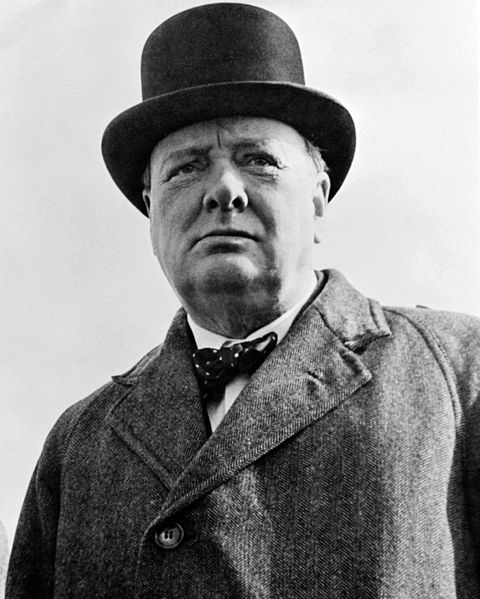Driving Success: Unveiling Leadership Lessons from General Motors
 The Enduring Legacy: Leadership Lessons from General Motors
The Enduring Legacy: Leadership Lessons from General Motors
The Enduring Legacy of General Motors (GM)
General Motors (GM), an iconic name in the automotive industry, has left an indelible mark on the world. With a rich history spanning over a century, GM has weathered numerous challenges, evolving as a symbol of innovation, resilience, and leadership. From the pioneering work of Alfred Sloan to the transformative vision of Rick Wagoner, GM’s leaders have guided the company through turbulent times and redefined the parameters of success.
GM’s History and Significance in the Automotive Industry
Established in 1908, GM quickly became one of the world’s largest and most influential automobile manufacturers. Through strategic acquisitions and innovative engineering, GM introduced revolutionary concepts such as the automatic transmission, electric cars, and advanced safety features. As the parent company of prestigious brands like Chevrolet, Cadillac, Buick, and GMC, GM has been at the forefront of automotive design, engineering, and manufacturing.
GM’s global footprint has made it a symbol of American industrial might, capturing the aspirations and dreams of millions. Its factories have not only produced vehicles but also generated employment opportunities and fueled economic growth. The company’s success has been intertwined with the nation’s history, shaping the very landscape of American transportation.
General Motors Provides Valuable Leadership Lessons that Can Inspire and Guide Aspiring Leaders in Any Field
The story of General Motors is not just about automobiles; it is a story of leadership. GM’s journey offers valuable insights into visionary leadership, crisis management, cultural transformation, collaboration, ethics, leadership development, and succession planning. These lessons are not confined to the automotive industry but extend to leaders across all fields, providing a roadmap for success and resilience in an ever-changing world.
Throughout the following sections, we will delve into the captivating stories of GM’s leaders and the lessons they imparted. From Alfred Sloan’s transformative vision to Charles Wilson’s resilience during challenging times, and from Rick Wagoner’s commitment to innovation to Mary Barra’s focus on cultural transformation, each leader’s story carries profound wisdom that can inspire and guide aspiring leaders in their own journeys.
As we explore these leadership lessons, it is important to remember that the success of General Motors was not built on the efforts of one individual but on the collective brilliance of countless minds and the dedication of thousands of employees. It is a testament to the power of effective leadership in harnessing the potential of teams and creating a culture of excellence.
By studying the experiences and strategies employed by GM’s leaders, we can uncover valuable insights that are as relevant today as they were in the past. These lessons will help us navigate the complexities of leadership, drive positive change, and inspire those around us to reach their full potential.
Join us on this journey through GM’s illustrious history as we unravel the leadership lessons and stories that have shaped the automotive industry and continue to inspire leaders across the globe.
Visionary Leadership at GM
Introduction to Visionary Leaders at GM
Throughout its history, General Motors has been blessed with visionary leaders who have steered the company through triumphs and tribulations. One such leader was Alfred Sloan, who served as the President and CEO of GM from 1923 to 1946. Sloan’s impact on GM and the automotive industry as a whole cannot be overstated. He transformed GM from a collection of separate car companies into a highly centralized, integrated corporation.
Key Figures: Alfred Sloan, Charles Wilson, and Rick Wagoner
Alfred Sloan: The Architect of Modern GM
Alfred Sloan’s visionary leadership laid the foundation for General Motors’ rise to dominance. He recognized the need to differentiate GM’s brands, creating a portfolio strategy that catered to different consumer segments and price points. This approach allowed GM to capture a broader market share and achieve economies of scale through shared platforms and components. Sloan’s emphasis on standardization and cost-efficiency revolutionized the automotive industry.
Sloan’s leadership extended beyond product strategy. He pioneered the concept of professional management within GM, creating a decentralized structure with clearly defined roles and responsibilities. This approach empowered managers at various levels and fostered a culture of innovation and accountability.
Charles Wilson: Leading through Challenging Times
Charles Wilson, who served as President of GM from 1946 to 1953 and later as the United States Secretary of Defense, faced significant challenges during his tenure. With World War II behind them, GM needed to shift gears to meet the demands of a peacetime economy. Wilson’s leadership was instrumental in guiding GM through this transition.
Wilson recognized the importance of diversifying GM’s product portfolio beyond automobiles. He encouraged the expansion of GM’s activities into defense and aerospace industries, laying the groundwork for GM’s involvement in the space race and technological advancements.
Rick Wagoner: Navigating Turbulent Waters
Rick Wagoner assumed the role of CEO in 2000, a time when GM faced intense competition, changing consumer preferences, and a challenging economic climate. Wagoner’s leadership was characterized by his commitment to innovation and globalization.
Under Wagoner’s guidance, GM introduced groundbreaking technologies, such as the hybrid-electric Chevrolet Volt and the fuel cell-powered Chevrolet Equinox. He also prioritized global expansion, particularly in emerging markets like China, India, and Brazil, recognizing the significance of a global presence for long-term success.
Lessons Learned
The Importance of Having a Clear Vision
GM’s visionary leaders understood the criticality of having a clear and compelling vision. Alfred Sloan’s brand differentiation strategy, Charles Wilson’s diversification efforts, and Rick Wagoner’s commitment to innovation all stemmed from a visionary outlook. As leaders, it is essential to articulate a compelling vision that inspires and aligns the organization toward a common goal.
Fostering Innovation and Adapting to Changing Market Dynamics
GM’s leaders consistently fostered a culture of innovation and adaptability. Alfred Sloan’s emphasis on research and development laid the groundwork for future breakthroughs. Charles Wilson’s diversification efforts reflected his recognition of the need to adapt to changing market dynamics. Rick Wagoner’s focus on innovative technologies positioned GM for the future. Leaders must encourage a culture of innovation, constantly scan the business landscape for changes, and adapt their strategies accordingly.
Balancing Short-Term Profitability with Long-Term Sustainability
GM’s leaders faced the challenge of balancing short-term profitability with long-term sustainability. While the pursuit of immediate financial gains is important, leaders must also consider the long-term implications of their decisions. Alfred Sloan’s emphasis on standardization and cost-efficiency contributed to GM’s profitability. Charles Wilson’s diversification efforts ensured resilience in the face of changing economic conditions. Rick Wagoner’s focus on global expansion laid the foundation for future growth. Leaders must strike a balance between short-term goals and long-term sustainability to ensure organizational success.
The visionary leadership at GM has left an indelible mark on the automotive industry. The lessons learned from Alfred Sloan’s strategic acumen, Charles Wilson’s resilience, and Rick Wagoner’s commitment to innovation are invaluable for leaders across all fields. By adopting a visionary mindset, fostering innovation, and balancing short-term profitability with long-term sustainability, leaders can navigate the complexities of their respective industries and drive their organizations toward continued success.
In the next section, we will explore GM’s experiences in crisis management and resilience, shedding light on the valuable leadership lessons that emerged during challenging times.
Crisis Management and Resilience
Overview of Major Crises Faced by GM
General Motors has faced its fair share of crises throughout its history, each presenting unique challenges that tested the company’s resilience and leadership. From economic downturns to product recalls and safety concerns, GM has navigated turbulent waters with varying degrees of success. Examining these crises provides valuable insights into effective crisis management and the role of leadership in rebuilding trust and reputation.
Lessons Learned
Effective Crisis Management Strategies
Crises have the potential to severely impact an organization’s reputation, customer trust, and bottom line. GM’s leaders have demonstrated the importance of swift and decisive action during such times. They have implemented crisis management strategies that emphasize transparency, accountability, and proactive communication.
Acknowledging mistakes, taking responsibility, and demonstrating a genuine commitment to rectifying the situation are crucial components of effective crisis management. GM’s leaders have shown that by addressing issues head-on, implementing corrective measures, and fostering open dialogue, organizations can begin to rebuild trust and mitigate the damage caused by a crisis.
The Role of Leadership in Rebuilding Trust and Reputation
Trust is the cornerstone of any successful organization, and during times of crisis, trust can be severely eroded. GM’s leaders have recognized the significance of rebuilding trust through consistent and ethical leadership. They have prioritized transparency, honesty, and accountability in their actions and communications.
By taking ownership of mistakes, ensuring transparency in investigations, and implementing stringent quality control measures, GM’s leaders have showcased their commitment to rebuilding trust with customers, stakeholders, and the public. These actions not only help restore faith in the organization but also create a foundation for long-term reputation management and sustainability.
Developing Resilience to Navigate Through Adversity
Crises can be catalysts for change and growth. GM’s leaders have demonstrated resilience by navigating through adversity and emerging stronger from challenging situations. They have shown the ability to adapt, learn from mistakes, and implement necessary changes to prevent future crises.
Resilient leaders understand that setbacks are an opportunity for growth and innovation. They foster a culture that encourages learning from failures, embracing change, and continuously improving processes. By cultivating resilience within the organization, leaders can create an environment where employees are empowered to overcome challenges, embrace innovation, and drive sustainable success.
GM’s experiences in crisis management and resilience serve as a valuable guide for leaders facing adversity in any industry. By implementing effective crisis management strategies, rebuilding trust through ethical leadership, and developing resilience, leaders can navigate through challenging times and position their organizations for long-term success.
In the next section, we will delve into the topic of cultural transformation and change leadership at GM, exploring how the company has adapted to shifting market dynamics and the lessons that can be gleaned from their experiences.
Cultural Transformation and Change Leadership
Examination of Cultural Shifts at GM Over the Years
General Motors has experienced significant cultural shifts throughout its history. From a culture rooted in hierarchical structures and rigid processes to one that embraces collaboration, innovation, and adaptability, GM’s leaders have recognized the need for cultural transformation to thrive in a rapidly changing business landscape.
Lessons Learned
The Power of Organizational Culture in Driving Success
GM’s leaders understand that organizational culture plays a pivotal role in shaping the company’s trajectory. They recognize that a positive and aligned culture can drive innovation, employee engagement, and overall performance. By fostering a culture that values collaboration, risk-taking, and continuous improvement, leaders create an environment where employees feel empowered to contribute their best and drive organizational success.
Strategies for Leading Cultural Transformations
Cultural transformation requires strong leadership and deliberate action. GM’s leaders have employed various strategies to lead cultural shifts within the organization. They have championed open communication, transparency, and inclusion to break down silos and foster collaboration across departments and teams.
GM’s leaders have also embraced change themselves, serving as role models for the desired cultural attributes. By aligning incentives, providing resources for learning and development, and recognizing and rewarding behaviors that align with the desired culture, leaders have influenced employees to embrace the change and become ambassadors of the new culture.
Overcoming Resistance to Change and Fostering a Growth Mindset
Change is often met with resistance, and cultural transformation is no exception. GM’s leaders have encountered resistance from employees accustomed to traditional ways of working. They have addressed this resistance by actively engaging employees, listening to their concerns, and providing clarity about the benefits of the cultural transformation.
Additionally, leaders have fostered a growth mindset within the organization, encouraging employees to embrace new ideas, experiment, and learn from failures. They have created a safe environment where innovation is celebrated, and risk-taking is encouraged. By cultivating a growth mindset, leaders empower employees to adapt to change and contribute to the organization’s success.
Cultural transformation is an ongoing process, and GM’s experiences offer valuable lessons for leaders seeking to lead change in their own organizations. By recognizing the power of culture, implementing effective strategies for cultural transformation, and fostering a growth mindset, leaders can create an environment where innovation, collaboration, and adaptability thrive.
In the next section, we will explore the topic of collaboration and teamwork at GM, examining how the company has leveraged collaborative efforts to drive innovation and success.
Collaboration and Teamwork
Exploration of Collaborative Efforts at GM
Collaboration and teamwork have been instrumental in General Motors’ success throughout its history. GM’s leaders have recognized the power of bringing diverse perspectives together and fostering a culture of collaboration to drive innovation, problem-solving, and overall organizational performance.
Lessons Learned
Building and Leading High-Performing Teams
GM’s leaders understand the importance of assembling high-performing teams that can deliver exceptional results. They recognize that diverse teams, comprising individuals with varied skills, backgrounds, and perspectives, bring a wealth of ideas and insights to the table. By assembling teams with complementary strengths and fostering a culture of mutual respect and collaboration, leaders can unlock the full potential of their teams.
GM’s leaders have also prioritized clear communication of goals and expectations, ensuring that team members are aligned and working towards a common objective. They have promoted a sense of shared accountability, where individual successes are celebrated, and failures are treated as learning opportunities for the entire team.
Effective Communication and Fostering a Culture of Collaboration
Effective communication lies at the heart of successful collaboration. GM’s leaders have recognized the importance of creating channels for open and transparent communication throughout the organization. They have encouraged dialogue, active listening, and the sharing of ideas and information.
Leaders have also fostered a culture that values collaboration and teamwork. They have established cross-functional teams, encouraged knowledge sharing, and broken down departmental silos. By creating an environment where collaboration is the norm, leaders empower employees to work together towards common goals, driving innovation and improved performance.
Leveraging Diverse Perspectives for Innovation and Problem-Solving
GM’s leaders have embraced diversity as a catalyst for innovation and problem-solving. They understand that diverse perspectives bring forth a wide range of ideas, leading to creative solutions and a competitive advantage. By actively seeking diverse talent, promoting inclusion, and valuing different viewpoints, leaders encourage a culture of innovation and foster an environment where new ideas can flourish.
Moreover, leaders have recognized the importance of creating platforms and processes that enable collaboration across functions and levels within the organization. They have implemented mechanisms for cross-functional collaboration, brainstorming sessions, and innovation labs, where employees from different backgrounds and areas of expertise can come together to generate breakthrough ideas.
The lessons learned from GM’s collaborative efforts emphasize the value of building high-performing teams, effective communication, and leveraging diverse perspectives for innovation. By fostering a culture of collaboration and teamwork, leaders can tap into the collective intelligence and creativity of their teams, leading to enhanced problem-solving, improved decision-making, and ultimately, organizational success.
In the next section, we will explore the topic of ethical leadership and corporate social responsibility at GM, examining how the company has integrated ethics into its decision-making processes and contributed to societal well-being.
Ethical Leadership and Corporate Social Responsibility
Analysis of GM’s Approach to Ethical Leadership
General Motors has recognized the significance of ethical leadership as a cornerstone of its operations. GM’s leaders have prioritized ethical decision-making, integrity, and corporate social responsibility, understanding that long-term success goes hand in hand with ethical conduct and making a positive impact on society.
Lessons Learned
Integrating Ethics into Decision-Making Processes
GM’s leaders have embedded ethical considerations into their decision-making processes. They have recognized the importance of considering the impact of decisions on various stakeholders, including customers, employees, shareholders, and the broader community. By incorporating ethical frameworks and conducting thorough ethical analyses, leaders ensure that decisions align with the company’s values and contribute to long-term sustainability.
Moreover, GM’s leaders have fostered a culture where ethical behavior is encouraged and rewarded. They have established codes of conduct, ethics training programs, and mechanisms for reporting unethical behavior. By setting the tone at the top and demonstrating a commitment to ethical leadership, leaders influence the behavior of employees at all levels of the organization.
The Importance of Corporate Social Responsibility
GM’s leaders understand the significance of corporate social responsibility (CSR) in building a positive brand image, fostering stakeholder trust, and contributing to the well-being of communities. They have implemented CSR initiatives that address environmental sustainability, social impact, and community engagement.
GM’s leaders have prioritized sustainability by investing in research and development of eco-friendly technologies, reducing the company’s carbon footprint, and promoting responsible resource management. They have also demonstrated social responsibility through initiatives such as supporting local communities, promoting diversity and inclusion, and contributing to educational and philanthropic endeavors.
Balancing Financial Success with Social and Environmental Considerations
GM’s leaders have recognized the importance of balancing financial success with social and environmental considerations. They understand that sustainable business practices not only benefit society and the environment but also contribute to long-term profitability.
By integrating sustainability goals into the company’s strategic objectives and financial planning, leaders ensure that decisions align with both financial performance and social responsibility. This holistic approach allows GM to create shared value, where societal and environmental needs are addressed alongside economic objectives.
GM’s commitment to ethical leadership and corporate social responsibility serves as a valuable lesson for leaders across industries. By integrating ethics into decision-making processes, prioritizing corporate social responsibility, and balancing financial success with social and environmental considerations, leaders can drive positive change and contribute to a sustainable future.
In the next section, we will explore GM’s approach to leadership development and succession planning, uncovering the strategies employed by the company to cultivate future leaders and ensure organizational continuity.
Leadership Development and Succession Planning
Overview of GM’s Leadership Development Programs
General Motors recognizes the critical importance of leadership development and succession planning in sustaining organizational success. GM’s leaders have implemented robust programs and initiatives to identify, nurture, and develop the next generation of leaders within the company.
Lessons Learned
The Significance of Investing in Leadership Development
GM’s leaders understand that investing in leadership development is essential for maintaining a competitive edge in the industry. They recognize that effective leadership is a key driver of organizational performance and growth. As such, GM has prioritized leadership development initiatives that focus on enhancing leadership skills, fostering strategic thinking, and promoting innovation.
Through mentorship programs, leadership training, executive education, and rotational assignments, GM provides opportunities for emerging leaders to expand their knowledge, skills, and experiences. By investing in leadership development, GM’s leaders ensure a pipeline of capable leaders who are prepared to tackle future challenges.
Building a Pipeline of Future Leaders through Succession Planning
Succession planning is a critical component of GM’s leadership development strategy. GM’s leaders understand that effective succession planning ensures organizational continuity and minimizes disruptions during leadership transitions. They have established structured processes to identify high-potential talent, assess their readiness for leadership roles, and provide tailored development opportunities to groom them for future positions.
Succession planning at GM involves a comprehensive evaluation of candidates’ skills, competencies, and leadership potential. It aims to align leadership development efforts with the company’s strategic goals and anticipated future needs. By proactively identifying and developing internal talent, GM ensures a smooth transition of leadership and minimizes the risks associated with leadership vacancies.
Nurturing a Culture of Mentorship and Continuous Learning
GM’s leaders understand the value of mentorship and continuous learning in leadership development. They have fostered a culture that encourages experienced leaders to mentor and coach emerging talent within the organization. Mentorship provides invaluable guidance, support, and insights, helping emerging leaders navigate their career paths and develop their leadership capabilities.
Additionally, GM promotes a culture of continuous learning, where leaders are encouraged to seek opportunities for growth and improvement. GM’s leaders support ongoing professional development through various channels, such as executive education programs, workshops, conferences, and internal knowledge-sharing platforms. By nurturing a culture of mentorship and continuous learning, GM fosters a dynamic and adaptive leadership ecosystem.
GM’s approach to leadership development and succession planning serves as a testament to the company’s commitment to long-term success. By investing in leadership development, building a pipeline of future leaders through succession planning, and nurturing a culture of mentorship and continuous learning, GM’s leaders ensure that the company remains at the forefront of innovation and leadership excellence.
In the concluding section, we will recap the key leadership lessons and stories from GM, highlighting their enduring impact and relevance for leaders in any industry.
Charting a Course for Leadership Excellence: Embracing GM’s Inspiring Legacy
Key Leadership Lessons and Stories from GM
General Motors (GM) has provided a treasure trove of leadership lessons and inspiring stories throughout its storied history. From visionary leaders like Alfred Sloan, Charles Wilson, and Rick Wagoner to the collective efforts of countless employees, GM’s journey encapsulates the qualities and strategies necessary for effective leadership in any industry.
GM’s leaders have demonstrated the importance of having a clear vision that guides decision-making and aligns the organization toward common goals. They have fostered innovation and adaptability, recognizing the need to stay ahead of changing market dynamics. The ability to balance short-term profitability with long-term sustainability has been a key factor in GM’s success.
Moreover, GM’s leaders have excelled in crisis management and resilience, showcasing the significance of swift and transparent action, as well as the role of leadership in rebuilding trust and reputation. They have embraced cultural transformation, understanding that a positive and collaborative culture is instrumental in driving success and innovation. Ethical leadership and corporate social responsibility have been at the forefront of GM’s approach, demonstrating the importance of integrating ethics into decision-making and contributing to societal well-being.
GM’s commitment to leadership development and succession planning has ensured a continuous supply of capable leaders. By investing in leadership development, building a pipeline of future leaders, and fostering a culture of mentorship and continuous learning, GM has positioned itself for long-term success and sustainability.
The Relevance of GM’s Experiences for Leaders in Any Industry
While GM’s experiences have been within the context of the automotive industry, the leadership lessons gleaned from their journey have broad applicability across various fields. The qualities and strategies demonstrated by GM’s leaders—visionary thinking, crisis management, cultural transformation, collaboration, ethical leadership, and leadership development—are universal in their significance.
In today’s fast-paced and ever-changing business landscape, leaders face similar challenges regardless of industry. They must navigate uncertainties, drive innovation, foster collaboration, and maintain ethical standards. By studying GM’s experiences and the lessons derived from their leadership stories, leaders in any industry can gain insights and guidance to tackle their own challenges and inspire their teams.
The Enduring Impact of GM’s Leadership Legacy
The enduring impact of General Motors’ leadership legacy is evident not only in the automotive industry but also in the broader realm of leadership. The visionary leaders at GM have left an indelible mark, shaping the course of the company and inspiring generations of leaders.
Aspiring leaders can draw inspiration from the journey of GM, embracing the importance of clear vision, crisis management, cultural transformation, collaboration, ethics, and leadership development. GM’s leadership lessons serve as a reminder that successful leadership is a continuous journey, requiring adaptability, resilience, and a commitment to personal and organizational growth.
In conclusion, General Motors’ rich history of leadership provides a blueprint for success. By embracing the lessons learned from GM’s experiences, leaders can navigate the complexities of their respective industries, inspire their teams, and build organizations that drive innovation, sustainability, and positive impact. As we look to the future, let us carry forward the wisdom gained from GM’s leadership legacy and continue to strive for excellence in our own leadership endeavors.






